Illustration buyers (primarily magazines and newspapers) came to understand the value of direct drawing and importance of “being there”. While an artist can work from a photo, or their imagination, it’s the sights, sounds, smell, and environment that help give an on-the-spot drawing a uniqueness all its own.

Illustrators became “visual journalists” to cover various topics around the world.

One art director, Leo Lionni became a driving force behind the “visual journalism” movement. He worked for Fortune Magazine from 1948-1960 and not only hired illustrators but also fine art painters. He encouraged artists “to do the things they weren’t accustomed too.” Illustrators were sent on assignments all over the globe to draw upon and interpret firsthand experiences.
Robert Weaver, a pioneer illustrator in the visual journalism movement, said: “Lionni trusted the artist, and once he picked the right practitioner, he left him alone.”

For the January 1960 issue of Fortune Magazine, Weaver was sent to Woolworth to illustrate an article titled “What´s Come Over Old Woolworth?”

Weaver starts with a drawing of a stock boy and works his way up the corporate ladder.
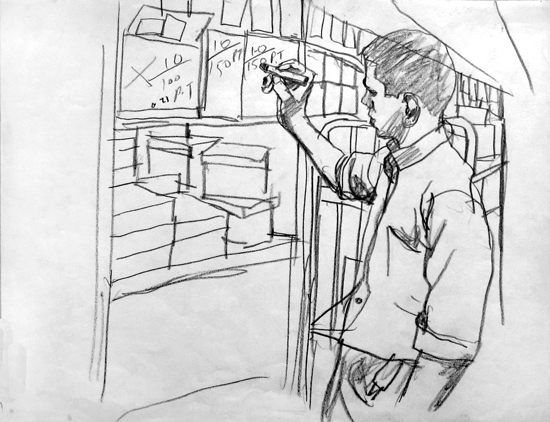
As he does this, the chairs and tables increase in size...

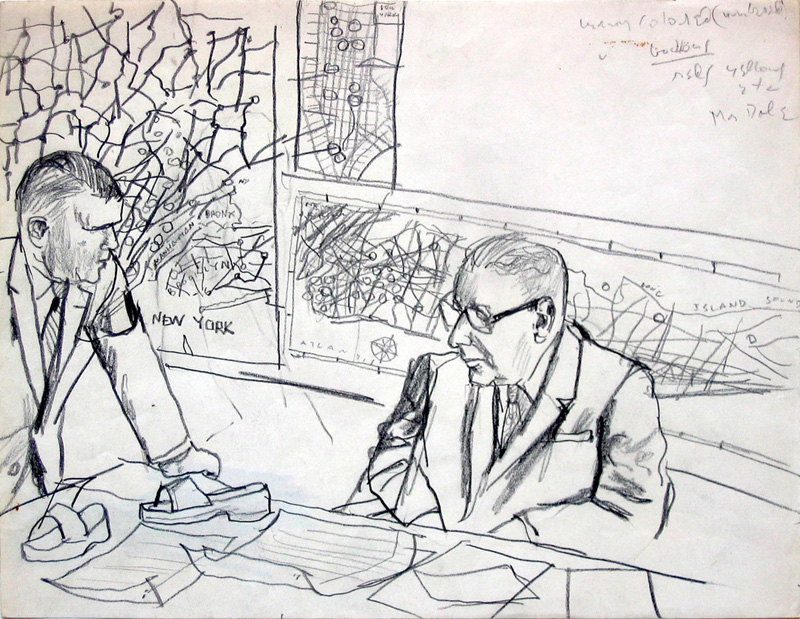

... to show the level of importance the men at the top were at that time.
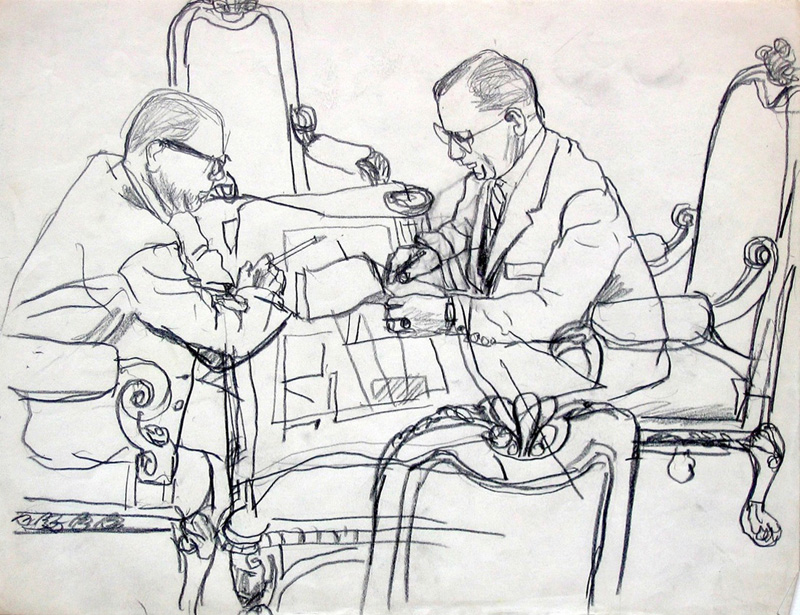
Weaver described the process, “The drawings were rendered from life. I asked the stock boy just to stand for a few minutes...
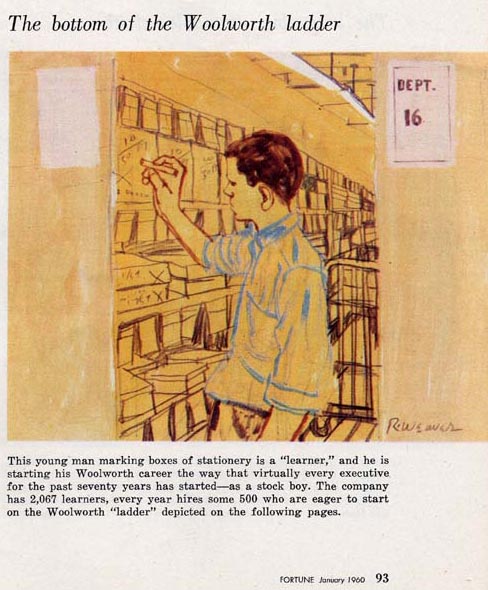
... and finally, I rendered the big-time lawyers. As for process, essentially there is not a hell of a lot of transformations between the sketches and the finishes. I’ve simplified the finish a little bit and added some color.”
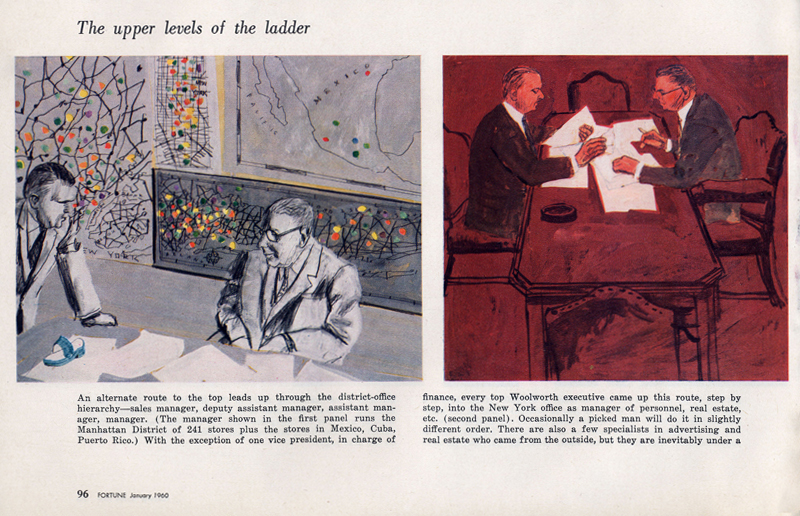
“I’ve actually made the pictures more decorative. My sketches are notes, and the color variations stay in the mind. I make the drawings without colors, and later I simply bathe the picture in what I remember to be proper light.”
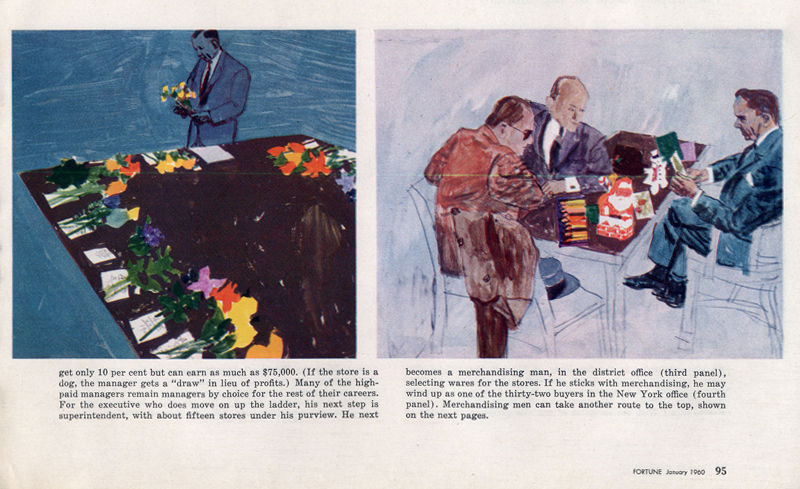
John Russell Clift, also for Lionni at Fortune, was assigned an article titled “Big Dogs, Little Dogs and the Air Cargo Bone”. As mentioned in the magazine pages: “Artist John Clift painted these pictures in the middle of the night, under the floodlights of O’Hare Airport. Nighttime is freight loading time at most airports.”
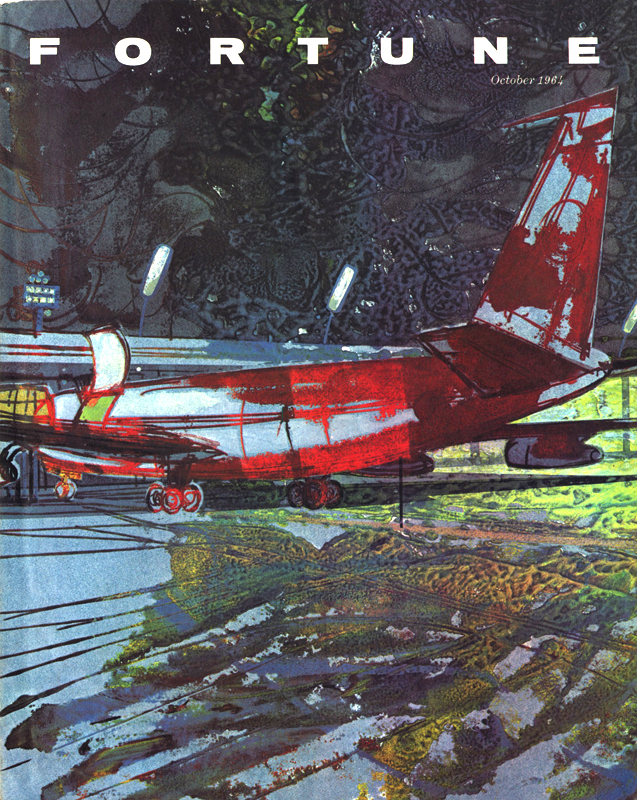

Also of note is that the credits don’t list them as illustrations. Instead they read “Silk-screen prints by John Russell Clift”.
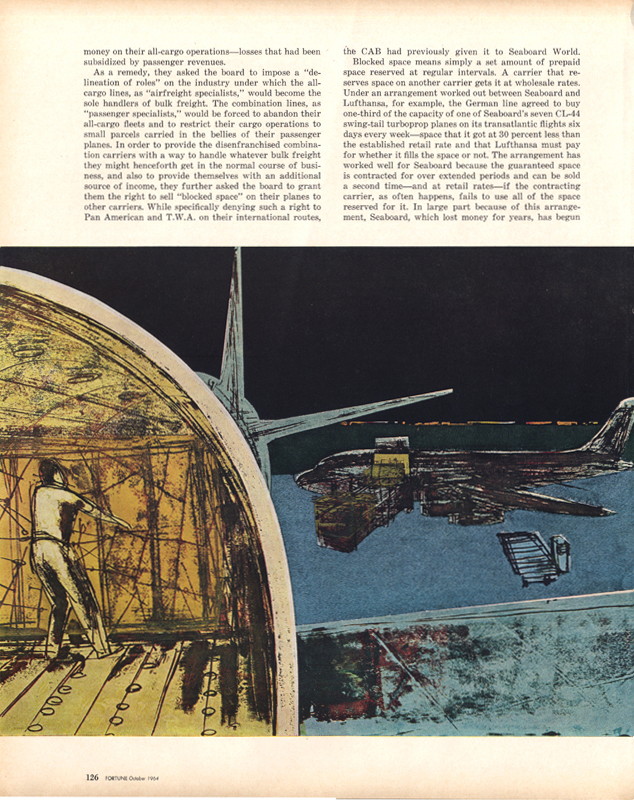
Weaver added: “That was Fortune’s policy, to send artists on stories. I was sent to Ohio and Alabama, just all over. Sports Illustrated later did the same thing.”
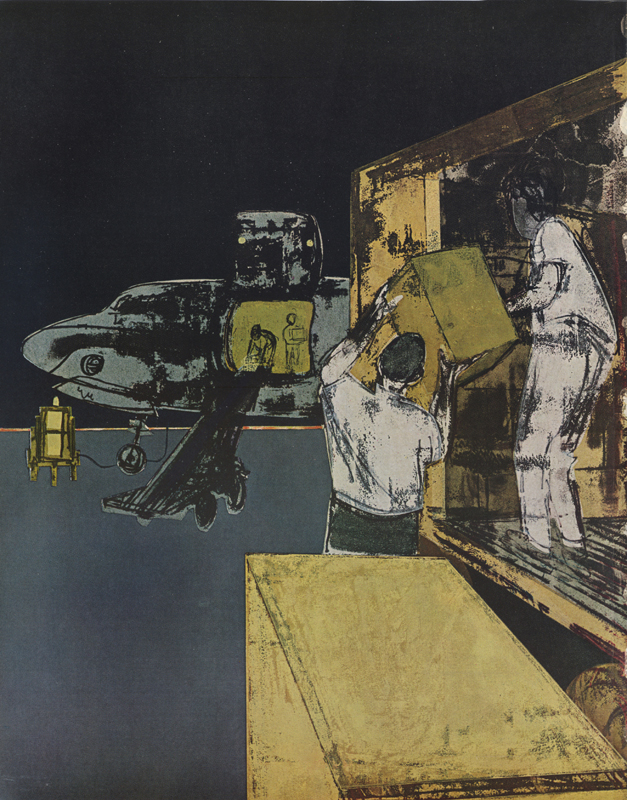
Reportage was a widely accepted artform.
Continued tomorrow.
* Daniel Zalkus is an illustrator with a passion for on-the-spot drawing. You can see some of Daniel's own excellent work at his website.
I remember when I first saw Weaver's work in Fortune Magazine. I was amazed because I never thought a business magazine used such expressive artwork. Great stuff! I wish that magazine sent artists out on assignment today.
ReplyDeleteRobert Weaver was one of my instructors in graduate school at the School of Visual Arts in New York. He was a challenging personality. Much of what he had to offer was sometimes missed by us the students. His line work was gorgeous. It was later that I truly felt lucky to have met he. He occupied a space few of us ever do.
ReplyDeleteIncredible!
ReplyDeleteDoug-
ReplyDeleteDid Weaver take his students out on location? Or was it mostly studio work? He passed away before I got to SVA so I had no chance to take his class. I love his on the spot drawings. Such direct and bold lines.
Stunning pictures.
ReplyDeleteThe night-cargo reportage is a daring venture of line and perspective and composition and color.
The atmosphere of a busy apron at night is rendered with all the exactitude required and still beyond realism.
Wow!
Daniel,
ReplyDeleteYes, it was the mid eighties, and his eyesight was poor, but his wit was ever present. His assignments were rather open ended, which caused some other the instructors frustration. It was the first year of the MFA program at SVA, and the program was a new concept for the illustration field at the time. Ironically not so much a new concept, but a revival of an old one. The illustrator as visual journalist. He was hard to pin down during our class critiques, and left me wondering after the non-concept of his approach. Now after decades as an illustrator, the purity of his work just "is", and I enjoy seeing it more then every.
I was not familiar with Clift, but those illustrations are rquite striking, especially that Fortune cover. Wow. Good for Lionni for giving Clift such a long leash, and good for Clift for using it.
ReplyDeleteNice images from Weaver too. He did some strong color work, but I always thought his drawings, where he combined Austin Briggs and Ben Shahn, were his best work. That final drawing in the series of managers sitting at desks is a real honey.
David
ReplyDeleteYeah those CLift silkscreens are fantastic. Dan and i have been trying to fine other work by him in a similar vein but to no avail. If you come across anything let me know!
best
Matt
david also posted a new fuchs on my flickr. i know you are a big fan
ReplyDeletehttp://www.flickr.com/photos/mattdicke/6987089352/
I saw some of Weaver's drawings exhibited in Luzerne several years ago and seem to recall that there was a small collection of his drawings. Does anyone know about such a book?
ReplyDeleteHow can I have missed this artist until now ? Robert Weaver's work is right up my street #cheriedidthis
ReplyDeleteThis is a great series, Leif! I remember seeing some of these pictures when I was a kid and it's great to know the story behind them.
ReplyDelete